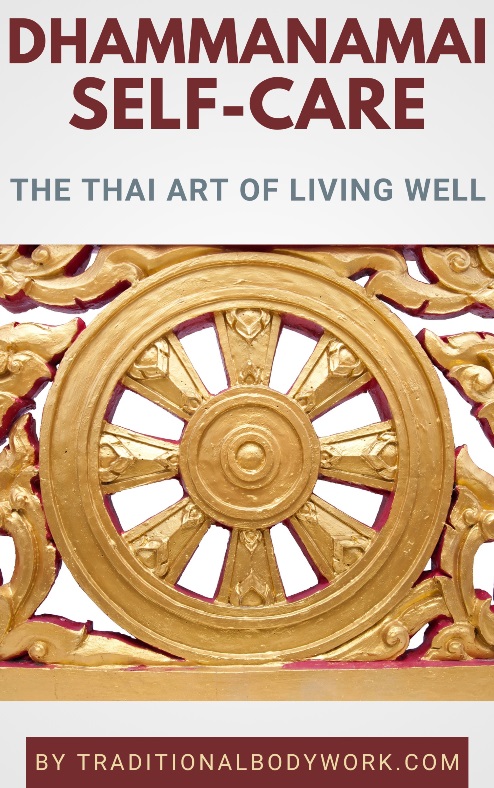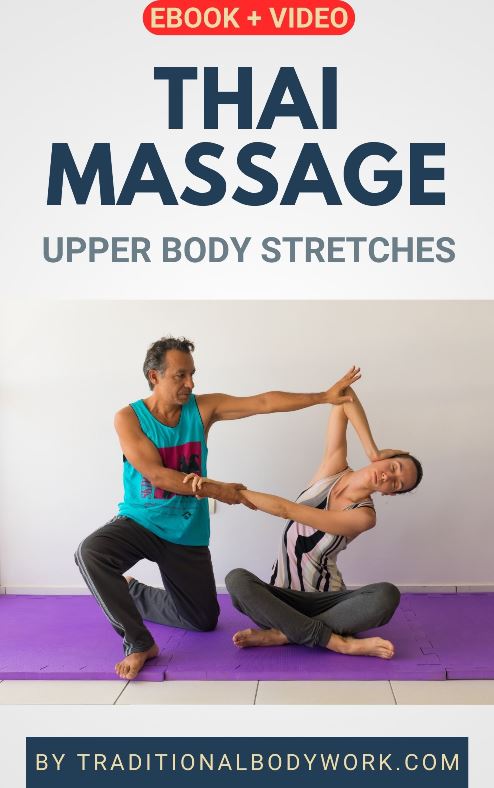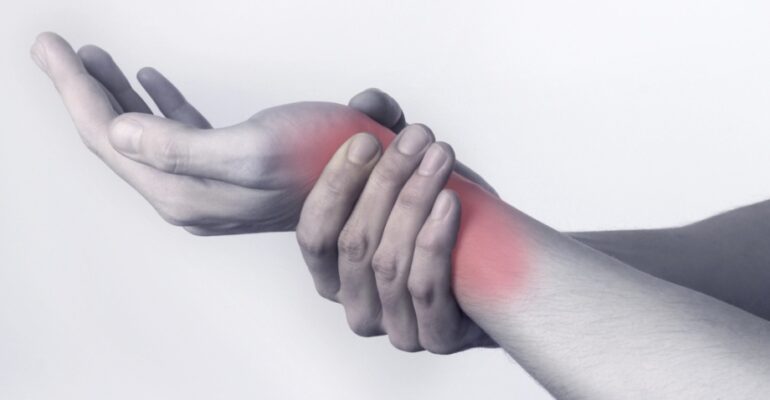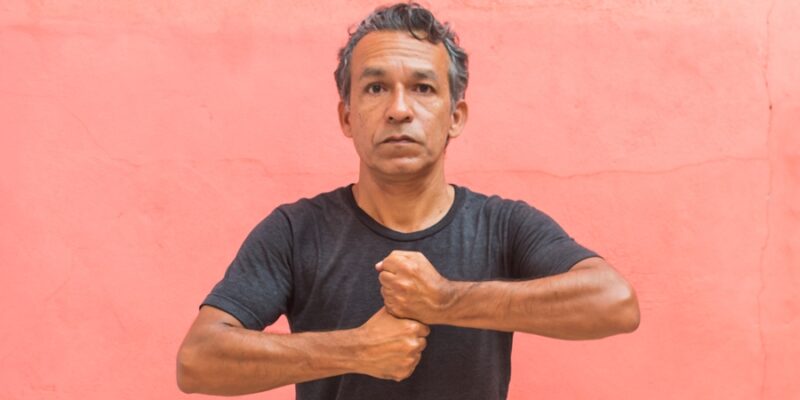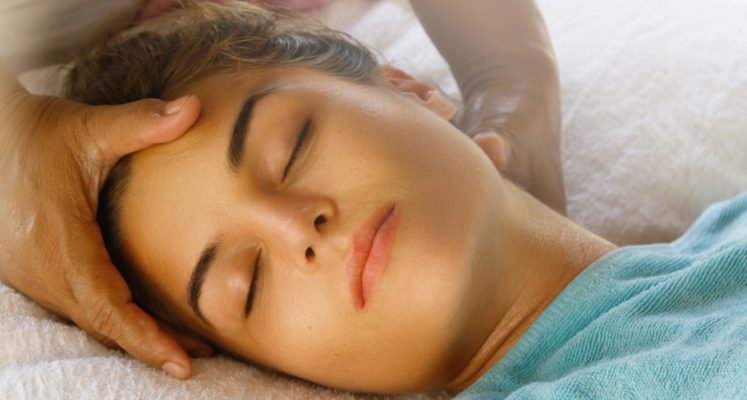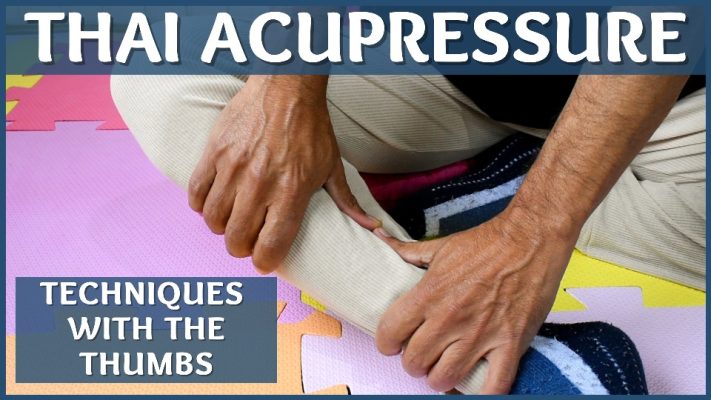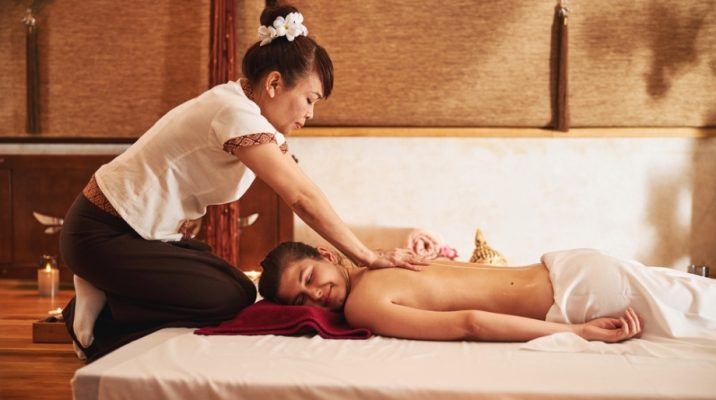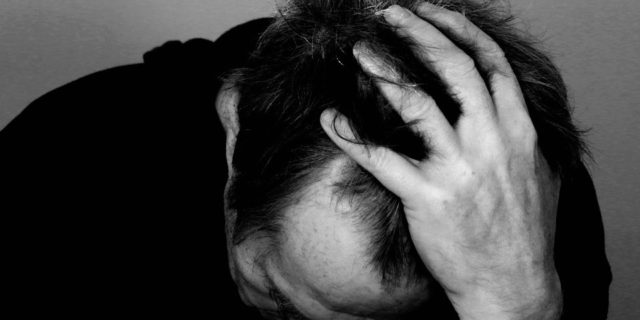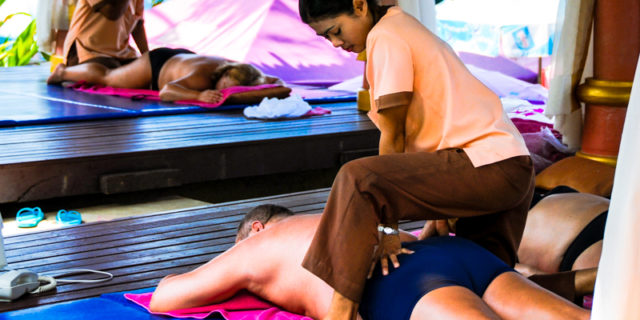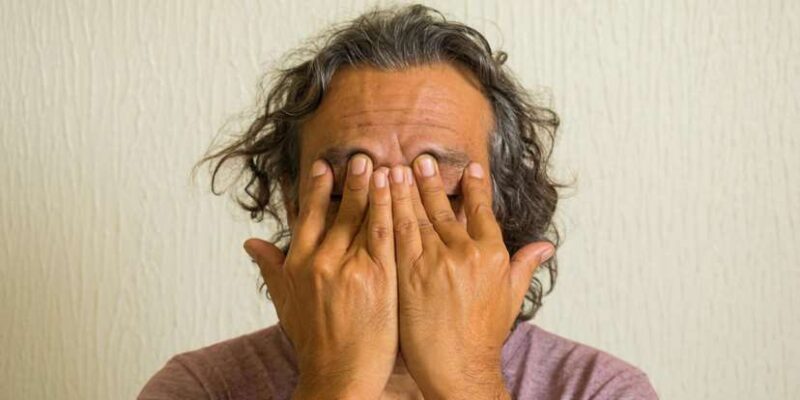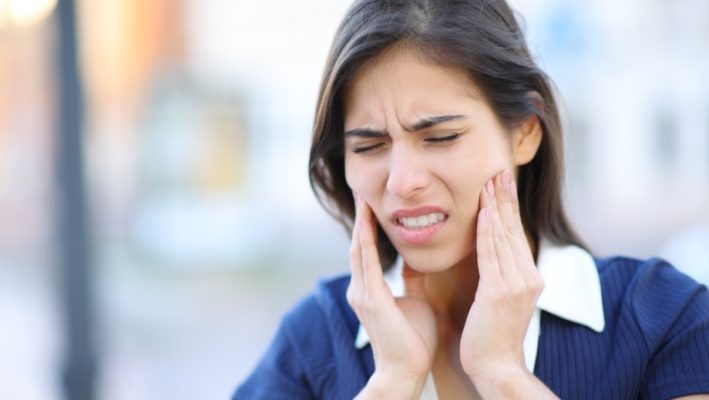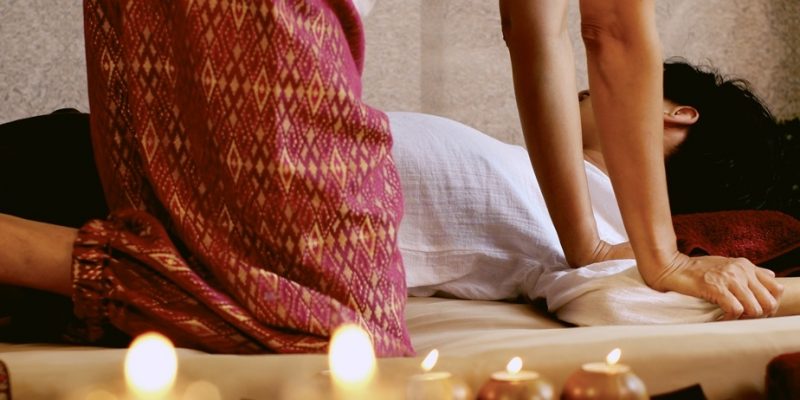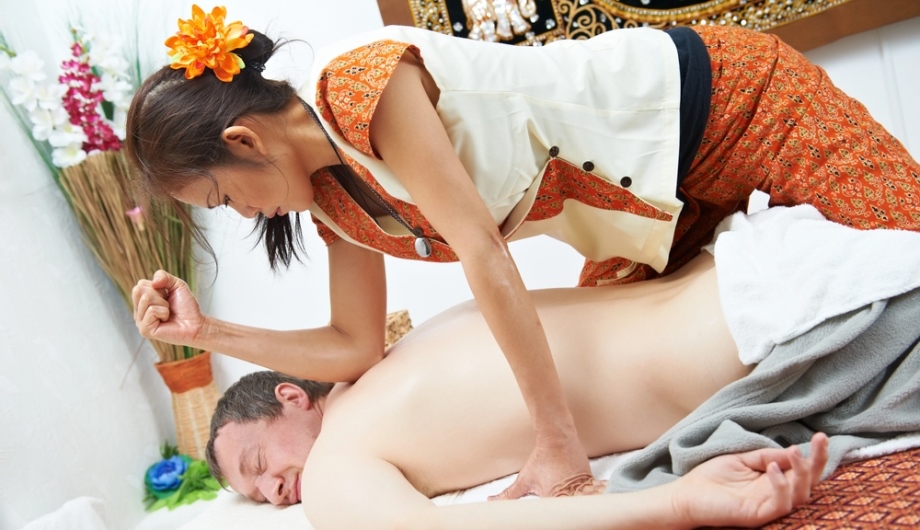
I’m pretty sure that, compared to other massage therapies, Thai Massage given on the floor — on a mat or mattress — requires the most physical fitness, flexibility, and strength from the practitioner. Yet, to be truthful, it does depend a bit on what style of Thai Massage one practices.

Southern Thai style or Royal style Thai Massage demands less of the practitioner when it comes to flexibility of the limbs compared to Northern Thai style or Thai Yoga massage, but on the other hand it demands more of the thumbs and wrists because of the primary focus on acupressure. Just to give an example.
In general, it takes quite a accustomation curve for the Thai Massage masseur to build a strong and flexible physique to meet the demands. This, of course, also depends on whether sessions are given regularly or not. To say, if one gives, for instance, one session per week, the pains, the discomforts will stay.
But let’s take a look at some of the relevant topics. It will make it easier to put together the whole picture.
2. The Groins, Hips and Glutes
3. The Thigh Muscles i.e. Quadriceps
4. Sitting on the Buttocks
5. The Thumbs and Wrists
6. The Back
7. The Chest, Arms and Shoulders
8. The Feet and Toes
9. Conclusion
1. The Knees
The Thai Massage practitioner will spend much of the session time on his or her knees. Especially with beginning therapists this will give knee pains because it put pressure on the knees and kneecaps. This can give pain inside the knee or simply rough, sore, very sensitive kneecaps.
Most of the time the pains and soreness will go away when giving Thai Massage regularly. It helps however to use a very large mat with a soft surface where the practitioner has space to kneel on the mat also during the session. Of course, one could also use knee pads to protect the knees, but okay… it looks a bit strange though, for one, and secondly… in that way one will never get used to the work.
Another way to avoid too much strain is to do much of the work half-kneeling only straining one knee at a time. In any case, half-kneeling positions are a common, important way to apply Thai Massage techniques, which have other benefits as shown in the next paragraph.
2. The Groins, Hips and Glutes
Talking about half-kneeling positions, these techniques “open up” and strengthen the hips, groins and glutes. It’s typically one of those stances in Thai Massage that gave it the name that you’re not only doing Yoga for your client i.e. the receiver (lazy yoga), but also Yoga for yourself.
By leaning in (when in half-kneeling position) and while giving pressure or doing a stretch on the receiver, both the abductor and adductor muscles of the hips and thighs are stretched and trained alternately. This can give muscle soreness in the beginning, but over time, you will get both more powerful and flexible e.g. supple in the groin and hips.
Another good technique to open the hips and groins is to sit in a kneeling position with your buttocks leaning on your heels) with the legs as far as possible apart.
3. The Thigh Muscles i.e. the Quadriceps
With practitioner kneeling positions you will automatically stretch the front upper thighs, the quadriceps. In the beginning this can be painful, but later on it will be an ease having made your quadriceps muscles longer, giving you no problems at all.
With squatting positions used in Thai Massage (most of the time used to lift the receiver) you will make your quadriceps stronger. So, here again you notice, as with many techniques used in Thai Massage, that you stretch or strengthen certain parts of your body depending on what technique or exercise is applied.
4. Sitting on the Buttocks
As with kneeling or half-kneeling working positions, considerable time is spent sitting on your buttocks.
Now, there are various ways of sitting while working with your client depending on the techniques you will want to use on them: two legs stretched straight in front of you, the legs bend with one leg behind you (the Thai sit), sitting in Lotus position (the legs crossed), sitting with one knee up with one leg behind you or bend in front of you, sitting with your buttocks on your heels or on one heels, and so on.
So here, it all depends on the way of sitting what muscles are contracted (or strengthened) and what muscles are stretched. In general, one could say that alternating styles of sitting can stretch, contract or strengthen upper thighs, the ankles, the toes, the shin muscles, the calves and hamstrings.
5. The Thumbs and Wrists
If one gives regular sessions, say about five to ten treatments of one-and-a-half to two–and-a-half hours per session, per week, this will be one of the areas where the therapist will very soon experience over-strain and pain. Nevertheless, it depends a bit on what kind of Thai Massage style is used. With lots of point-work or acupressure with the thumbs and/or lots of palming done (giving pressure with the palm of the hands) one will necessarily start to experience issues.
One gets used to this over time and luckily, giving acupressure or broader pressure with Thai Massage can be easily done by using other parts of the body also: the elbows, the knees, the feet and even the toes. It’s a good idea to alternate using other body parts to avoid overstraining.
6. The Back
Well, this is one of the most common issues that arise: low back pains. This has much to do with the way the therapist uses the body. It’s important to always try to keep the back straight at all times, for instance by giving pressure with stretched arms (instead of bending them) using bodyweight to lean in (this will keep the back straight).
Correct working ergonomics can avoid strain or pressure on the low back. Also, when lifting a client, one should try to do that by squatting while keeping the back straight, instead of bending over.
But also while sitting, back pains can start to occur. However, by kneeling (sitting on your heels or feet, instead of sitting with your buttocks directly on the floor) the back can be kept straight much better and thus avoiding discomfort and pain issues.
7. The Chest, Arms and Shoulders
Now, by giving pressure with keeping the arms straight and using your bodyweight, you will avoid strain on the low back and of the shoulders. On the other hand, it will put force on and contract the chest muscles, that is, the pectoralis muscles.
So, although it’s good to have stronger chest muscles, you will need to stretch those regularly to avoid a contracted pectoralis region (which will give you all kinds of problems of the neck, and trapezius area, higher back, etc).
Mind that if you give pressure with the arms bend it will relief your chest area, but on the other hand that will surely give problems for your shoulders (notably deltoids), low back, arms, and wrists in the long run.
8. The Feet and Toes
Many pressure and stretching techniques and exercises done in Thai Massage are applied with using the feet or toes. This will require a certain flexibility of toes and ankles, but also of the calves and hamstrings (with broad-surfaces stretches where the legs are kept straight).
This is important to not hurt yourself or your client, and the right suppleness can be achieved in time by doing exercises yourself or simply just by getting accustomed with the work.
Excellent exercises to boost flexibility in this area are sitting with your buttocks on your heels with the toes bend or sitting on your heels with the feet stretched (toes flat on the floor). Of course, all extra exercises, for instance, done with Thai Yoga or Yoga that stretch ankles, calves and hamstrings are helpful to quicker acquire the right physique.
9. Conclusion
As you could see, giving excellent Thai Massage sessions on the floor is highly demanding for your body. You will most likely get used to that, if you practice Thai Massage regularly or by doing extra exercises yourself (Yoga, Thai Yoga Reusi Dat Ton, Pilates, or any stretching and strengthening exercise modality), but you can also use certain Thai Massage techniques and ergonomics to avoid strain or train yourself to have a more suitable physical condition and physique.
Luckily, with Thai Massage, the toolbox of techniques is sheer endless and you can always use another method or technique to arrive to the same result for your client. Of course, this needs appropriate Thai Massage training, for instance, knowing how to give pressure on the muscles of the lower back of the client with your knees, feet, or elbows instead of the palms or thumbs needs know-how, but it can be done.
Finally, we must realize that giving Thai Massage on the floor is wonderful bodywork for yourself, keeping your body fit, flexible, supple, and in shape. As said, it’s not only lazy Yoga for the receiver, but moreover… active Yoga for the therapist.



